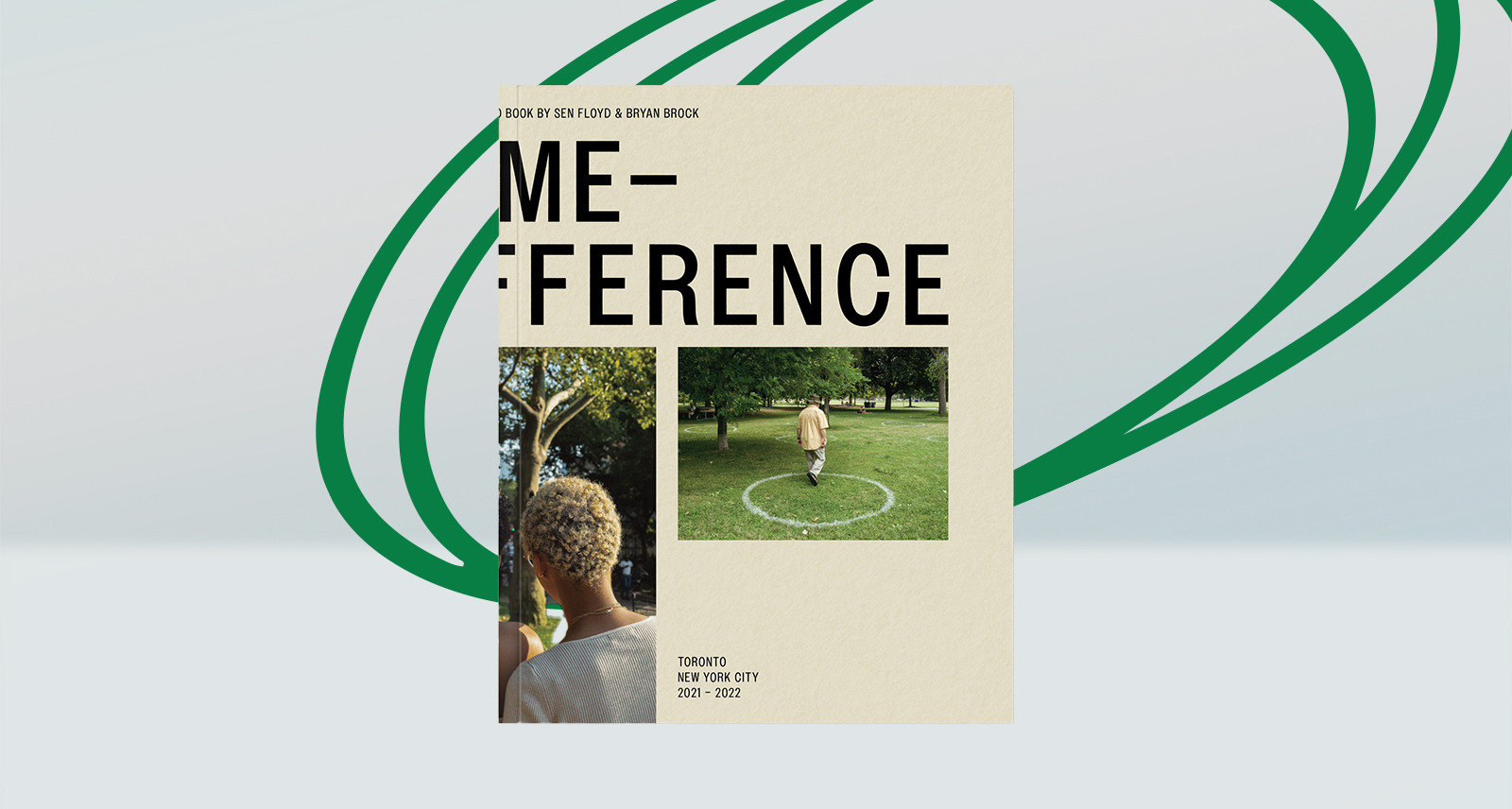Bryan Brock and Sen Floyd’s Photography Book Explores Life in Toronto and NYC
Flipping through Bryan Brock and Sen Floyd’s new book of street photography, Same-Difference, you see images of people in their daily lives — going to work, taking a break, running errands. Each photograph raises the question: are we looking at New York or Toronto? From far away, the differences between the two cities are obvious — scale, history, density. But in the book’s small-scale and often intimate images, the cities look almost interchangeable.
Floyd, a music video director and portrait photographer from New York, and Brock, a street photographer and community organizer from Toronto, are drawn to some of the icons that populate the streets of both cities: concrete flowerpots, caution tape, scaffolding, pigeons. More importantly, they are capturing the people, teenagers killing time on a park bench, two men talking in front of a hot dog cart, or men and women engrossed in their phones. Floyd describes the almost ineffable quality the two cities share: “They are similar not in terms of landmarks but in the way they move.”
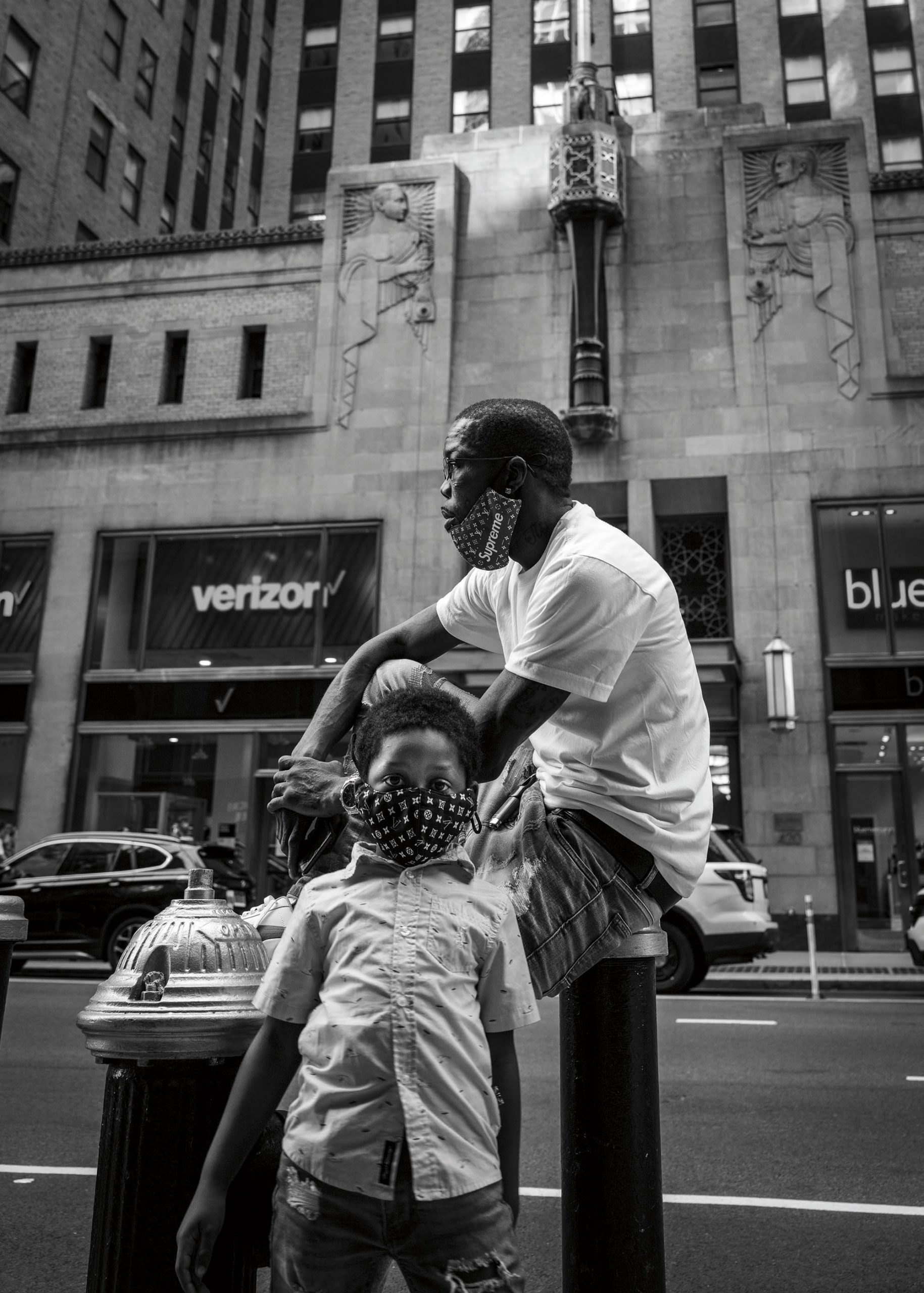
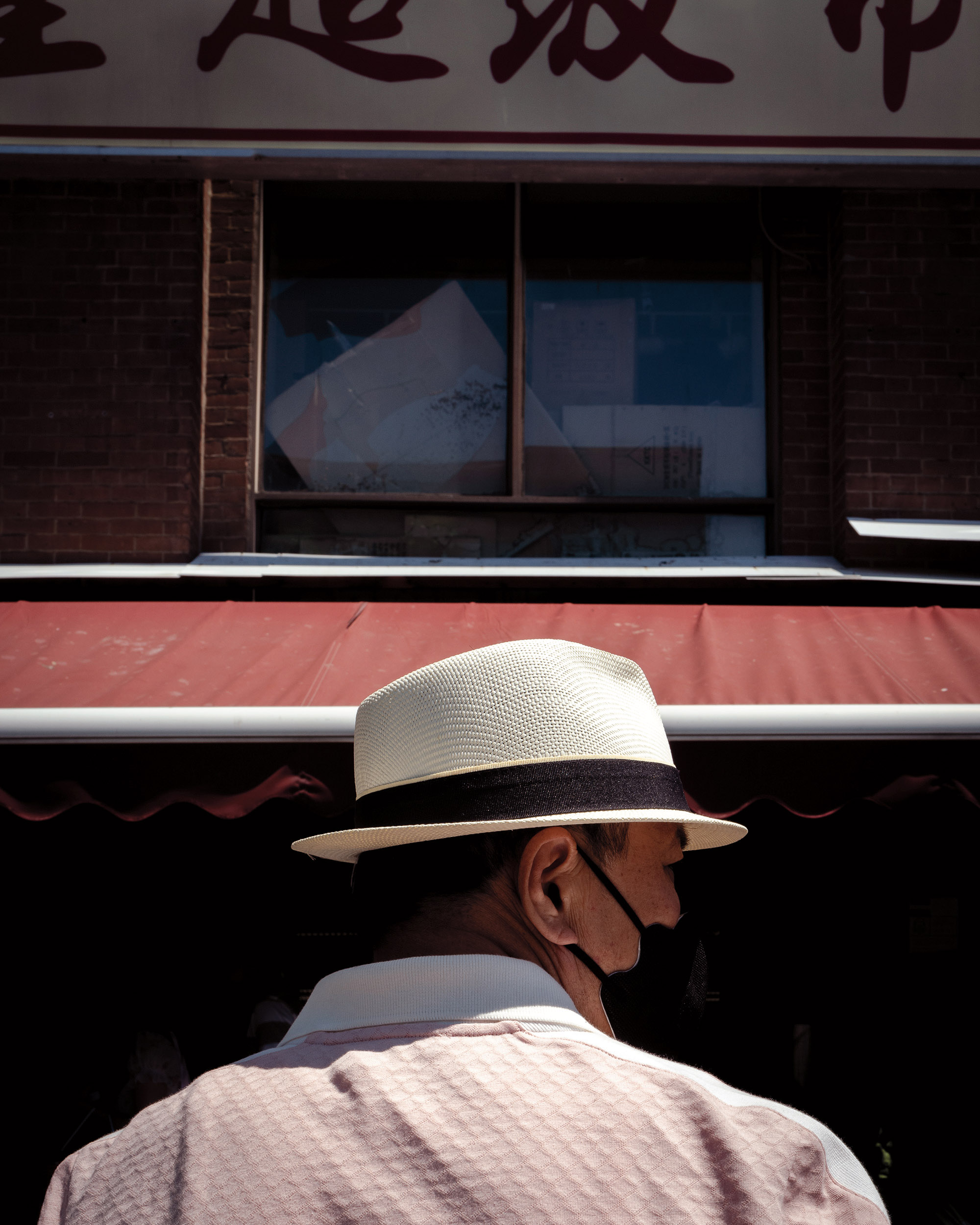
New York might move in a similar way, but as one of the most photographed cities in the world, it is captured very differently. As Brock notes, street photography is deeply embedded in the cultural imagination of New York City and in the lives of average New Yorkers. “In New York, it’s very normal to see hundreds of people on the street with cameras every day,” he says. “Toronto doesn’t have the same history of street photography as New York. So I think it’s playing catch-up.”
On the evidence of Same-Difference, Toronto is catching up fast. The book came about after a year-long collaboration between Brock and Sen, who met on the app Clubhouse in 2021, and later face to face when Brock visited New York. After photographing some of Floyd’s favourite neighbourhoods together — including Chinatown and Washington Square Park — they met up again in Toronto, where another series of photographs, taken in the Financial District and West Queen West, planted the seeds of this collaboration.
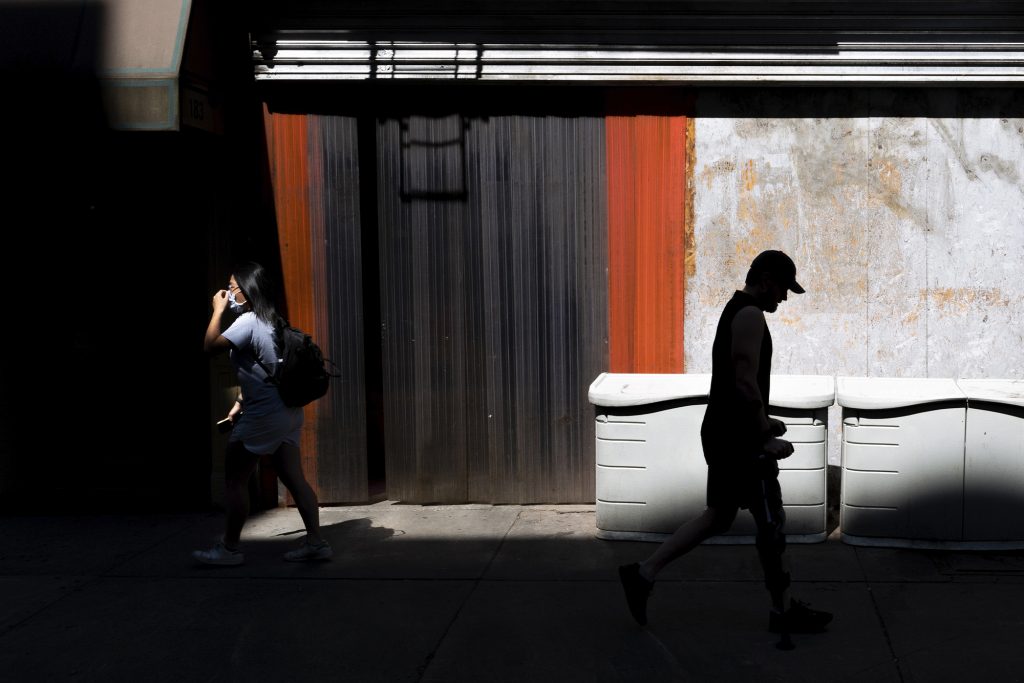
Both photographers are predisposed to capturing the kind of synchronous images that cities naturally offer up. Sen points to a photograph of a woman buying groceries on Spadina Avenue, in Toronto’s Chinatown, whose puffer jacket happened to match the produce on the stall behind her. In a striking photograph taken by Brock, a man on Queen West lifts up a coffee cup to take a sip just as a truck passes by bearing an image of a child about to drink from a glass of milk. “Street photography is recording moments in time,” Floyd muses. “Someone passing by me, a sliver of light, a bird flying by. Those are moments that won’t happen again.”
The trick is to catch these moments amid the city’s constant flux, Floyd notes: “Cultures are changing, identities are changing, even the landscape — like certain places you used to shoot are changing. There could be a new condo or commercial development and it changes people’s traffic patterns, how they navigate the city.” Both are drawn to their cities’ respective Chinatowns, which Floyd feels is one of the last places in New York that still feels like New York. The book also chronicles the small but significant changes in the city’s architecture over the past few years, like the socially distanced circles on the grass in Trinity Bellwoods Park or the many masked faces.
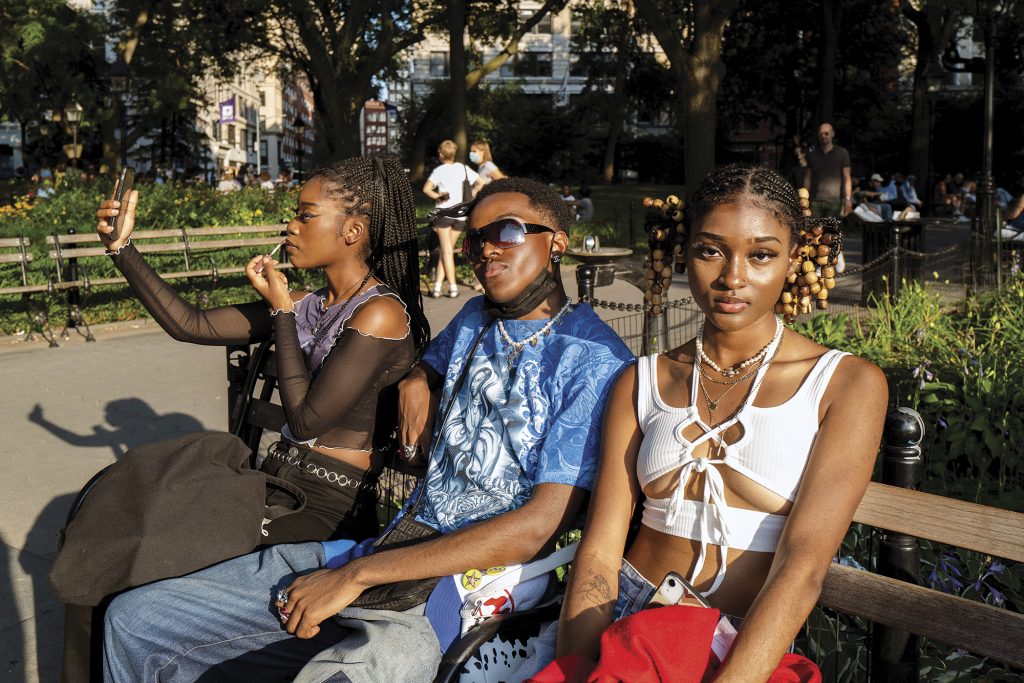
The pandemic lent an oddly serene quality to images of the notoriously busy cities. The photographs often feature a single figure in the frame, or two people standing conspicuously far apart. “That was really weird. In 2021, in Canada, we were still in lockdown. So there was barely anyone in these public spaces during the year that we shot.” But the state of affairs also suits Brock’s style: “I’m not great at the chaos,” he says. “I much prefer slowed-down, singular moments.”
While New Yorkers are quite open to being photographed, Floyd noticed that Torontonians, perhaps unaccustomed to being the subjects of photos, are more reserved. Brock concurs: “The general attitude of a New Yorker is far more outgoing than the general person from Toronto. It could be in their voice or in the style they choose to wear. Toronto is more conservative; you don’t have as many big personalities on the street.”
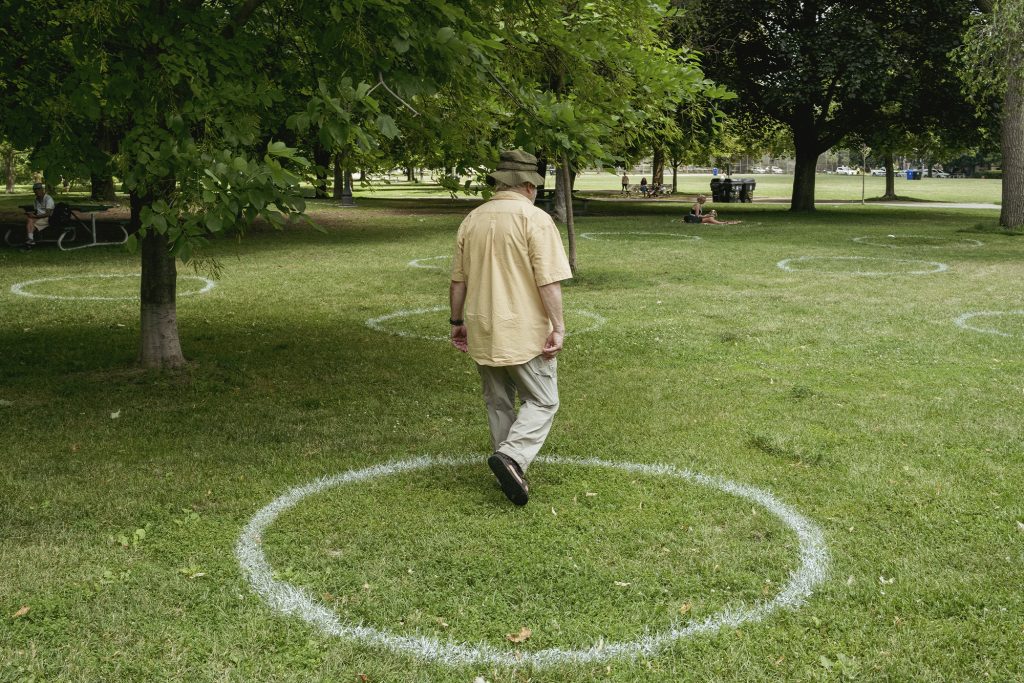
But big personalities or standout looks aren’t what seems to appeal to Brock and Floyd: neither chooses his subjects based on style alone, and the people captured in Same-Difference are the kind you might pass by without notice. But the photos are highlighting something effortlessly individualistic — and, for lack of a better word, cool — about what people simply put on for their day. There is a man in a white straw fedora and ’70s-style textured shirt, a girl’s jeans draped in chains that spell “B-I-T-C-H,” and a mother and her two daughters crossing Dundas Square in matching white fleece zip-ups.
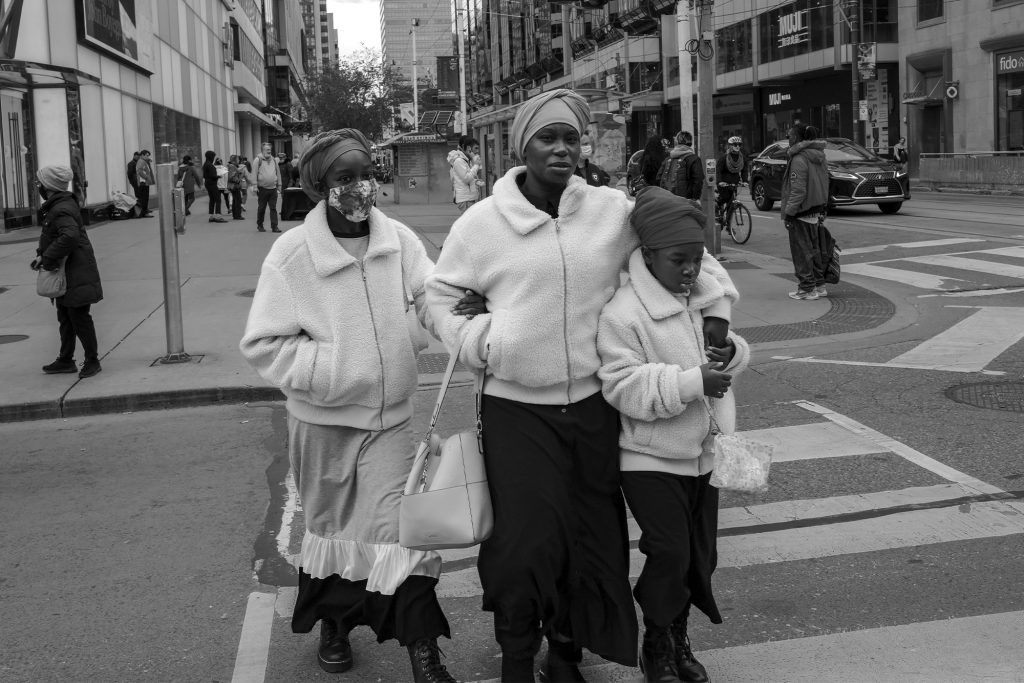
The careful attention they give to strangers in their cities is also reflected in their work with emerging photographers. Brock hosts aspiring photographers on walks throughout the city, during which he encourages them to make connections with strangers and develop their own style. They both sound most purposeful when talking about the next generation of street photographers. “Be present,” Floyd advises. “Don’t get caught up in trying to get to a future version of yourself. That future version of yourself is now. You may look back and not be able to remember what it felt like to be at this moment of time.”
